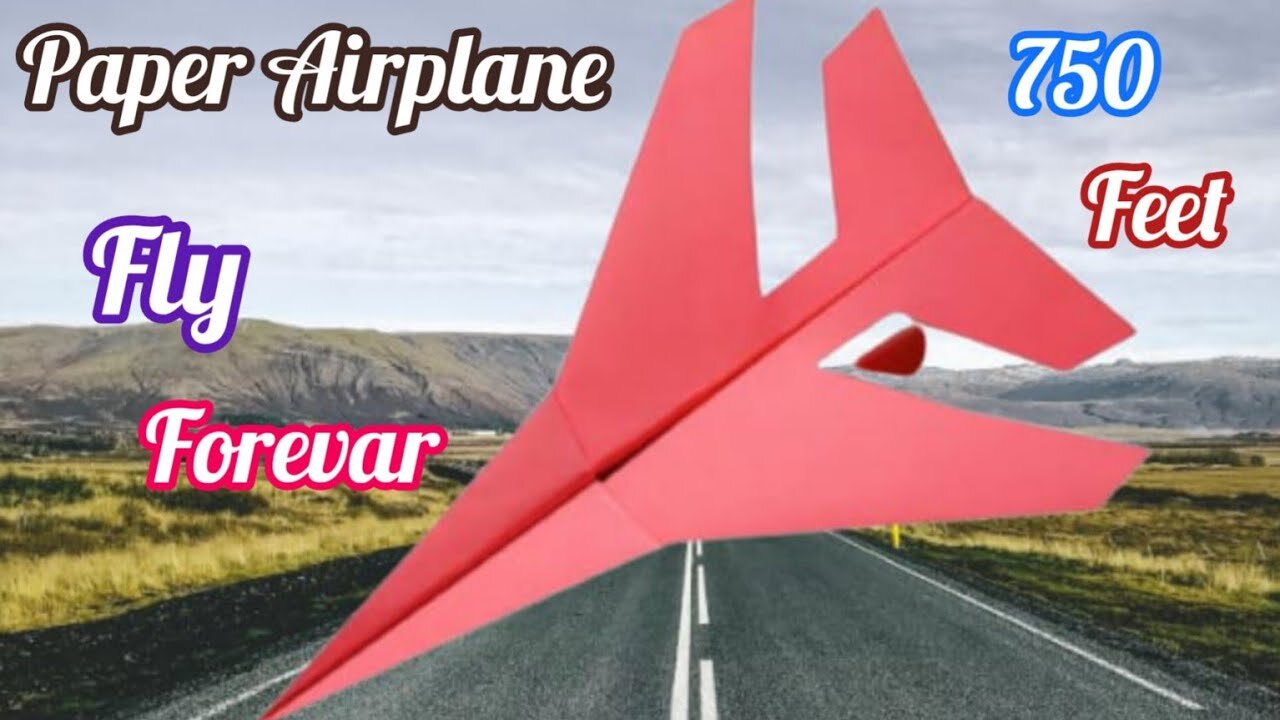Premium Only Content

how to make a4 paper flying airplane / Over 750 feet / Best Paper planes / Fly all day / Fly forever
how to make a4 paper flying airplane / Over 750 feet / Best Paper planes / Fly all day / Fly forever
Achieving a flight distance of over 750 feet with a paper airplane is challenging and may not be realistically achievable for most people. Environmental conditions, paper quality, and throwing technique will all play a significant role. That said, here is a popular paper airplane design known as "The Hammer" that is renowned for its long flight time:
The Hammer Paper Airplane Design
Start with an A4 sheet of paper.
Fold the paper in half lengthwise, then unfold.
Fold the top corners inwards.
Take the two top corners and fold them inwards so they meet at the center crease, forming a triangle.
Fold the triangle down.
The pointed tip of the triangle you just formed should be folded downwards so that its tip touches the bottom edge of the paper.
Fold the triangle's sides.
Now fold the two uppermost edges inwards so that they meet at the center crease. This further narrows the triangle shape.
Fold the bottom edge upwards.
Fold the small rectangle that's below the triangle upwards, covering the base of the triangle.
Fold in half.
Fold the paper along the center crease, so the previous folds are on the outside.
Make the wings.
Fold down both sides to form the wings. The fold should start about 2 inches from the nose (front) and taper to the back edge.
Adjust for flight.
Gently bend up the back edges of the wings for better lift. This is called giving the wings "dihedral angle."
Throwing and Optimizing Tips:
Throwing Technique: A smooth and steady throw is best. A strong or jerky throw can make the plane tumble. Experiment with different angles and throwing strengths.
Paper Type: Lightweight paper tends to fly better than heavier paper. Using standard printer paper should suffice.
Environment: Indoor environments with less turbulence will allow for more predictable flight paths. However, if you're aiming for maximum distance, you'd want a large open outdoor space and favorable wind conditions.
Tuning: Small adjustments can make a big difference. Experiment with the dihedral angle, the angle of the nose, and the tightness of the folds.
Practice: As with anything, practice will improve your technique and help you learn the best ways to adjust and throw your plane.
Remember, a flight of 750 feet is extremely optimistic. With good design and practice, you may achieve impressive distances, but they may be significantly less than this target. Enjoy the process and have fun experimenting!
how to make a paper airplane,how to make paper airplanes,how to make paper plane,paper airplane,how to make the worlds fastest paper airplane,how to fold the paper plane,paper plane,paper planes,how to make the best paper airplane,how to make a paper plane,origami paper planes,paper airplanes,paper planes channel,how to make origami,paper aeroplane,best paper airplane,how to make,how to fold a paper airplane
-
 LIVE
LIVE
Akademiks
2 hours agoDay 1/30. PLAYBOI CARTI 'I AM MUSIC' PRE STREAM.
3,156 watching -
 LIVE
LIVE
Simply Bitcoin
1 hour agoHe Wasn't Meant To Say This: Bitcoin Hits $1M in The Next 48 Months! | EP 1202
233 watching -
 DVR
DVR
The Dan Bongino Show
3 hours agoBitter Dems Move To Shutdown Government (Ep. 2441) - 03/13/2025
388K764 -
 56:37
56:37
Grant Stinchfield
1 hour agoNational Security Put at Risk... Biden Personal Emails Discovered Containing the Unthinkable!
70 -
 LIVE
LIVE
TheAlecLaceShow
12 hours agoGuests: Rep. Scott Perry | Jason & Erica Redman | Dems Want Government Shutdown | The Alec Lace Show
126 watching -
 52:21
52:21
The Rubin Report
2 hours ago‘Shark Tank’ Legend Notices Something About Trump’s Canada Plan No One Noticed
38.2K34 -
 1:39:07
1:39:07
Benny Johnson
2 hours agoPANIC: Massive Democrat Money Laundering Scandal EXPOSED, ActBlue in Collapse! Kash Criminal Charges
41.7K58 -
 2:08:37
2:08:37
Steven Crowder
4 hours agoUSAID Shredding Conspiracy | What Everyone's Getting Wrong with Half Asian Lawyer Bill Richmond
295K185 -
 1:07:01
1:07:01
Timcast
3 hours agoTrump THREATENS MASSIVE 200% Tariff Against EU As GLOBAL Trade War IGNITES, China Hits Canada
64.1K64 -
 LIVE
LIVE
Flyover Conservatives
12 hours agoNew Documentary Reveals Life-Threatening Corruption in the U.S. Government! - Matt Thayer; Michelle Obama & Gavin Newsom Enter the Podcast Game—But Why Now?| FOC Show
606 watching